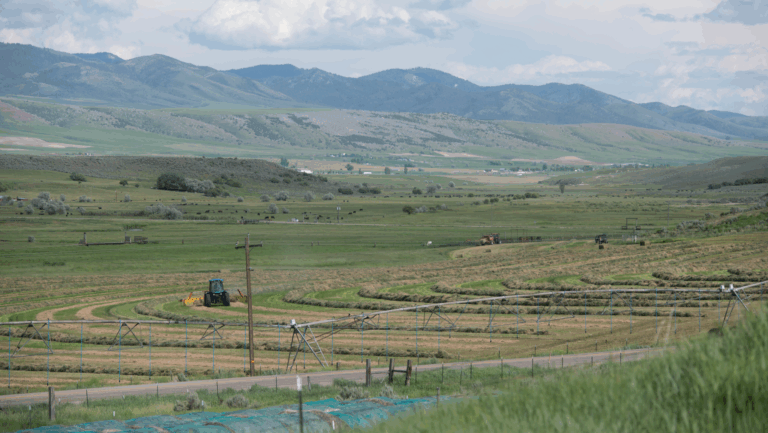Farmers Find Perks in Recreational Land Leasing
See how recreational land leasing—allowing hunters and other outdoorsmen on the land—can help an ag operation and benefit farmers in more ways than one.
Recreational land, and the benefits for agriculture, is the focus of our most recent article. In the ever-changing industry of agriculture, farmers and landowners are constantly looking for new ways to utilize their property for both increased income as well as land stewardship. In the past decade or so, hunters and outdoorsmen have given farmers another way to do just that – offering their land for recreation. Explore the benefits of recreational land leasing, and find out why a recreational land loan is a good idea.
Recreational Land: Benefits to Wildlife
Utilizing farm land as recreational land makes sense. Most landowners already have various types of wildlife present on their property. By engaging in recreational land management and leasing the land to hunters, farmers not only provide controlled recreation, but are able to practice wildlife management.
“More wildlife or better-quality wildlife on a property increases the value of the property both economically and aesthetically,” says Jay Cantrell, wildlife biologist and assistant big game program coordinator at the South Carolina Department of Natural Resources. He adds that it not only increases the enjoyment by providing more wildlife viewing opportunities, but farmers can also request higher lease prices from hunters.
Ways for a Farmer to Attract More Wildlife
“Farmers can promote wildlife through active management of their land and also by doing some little things in the course of their normal operations that are low-cost, but highly effective,” Cantrell says.
Some of those practices include thinning and burning timberlands, creating field borders or buffer strips around crops, and leaving brushy hedgerows that will provide food and shelter for the wildlife. Creating brush piles, planting fruit trees and shrubs, and providing access to water sources are also productive practices.
“There are many reasons to promote wildlife on your property aside from hunting and recreational activities,” adds Jordan Shipley, a correspondent lender in Texas for AgAmerica Lending, and an owner of Tecomate Holdings. “Wildlife management is a form of land stewardship that has become more important over the last few decades for maintaining healthy herds, as well as keeping wildlife from becoming a detriment to agriculture.”
Benefits to the Land
Wildlife is beneficial for the land itself, and important for recreational land management, by making the land attractive to hunters and other wildlife enthusiasts who visit. Shipley is a native Texan with a love for the land and outdoors. Before joining AgAmerica Lending, he worked with Tecomate, a nationally renowned company that specializes in growing bigger native deer in Texas by sourcing and farming crops that provide the best nutrition for the animals.
Tecomate offers several food plot planting systems to farmers, which allows them to plant the right seed in the right way to grow more, and bigger, native bucks. It also helps to hold deer in a specific area on the property, relieving pressure on the native habitat, in turn fostering improvement.
Shipley notes there are lots of food sources and plants that are great for attracting deer and other wildlife. Farmers have to be smart, though, because some are also profitable agricultural crops and you don’t want to harm those.
“For deer, year in and year out, oats are the most attractive commodity food crop,” remarks Shipley. “Tecomate has a blend called Max Attract that’s the overall best blend I know of for attracting deer, turkeys, pigs, and others. I also like alfalfa for its mix of protein content. It’s a perennial, meaning you don’t have to re-plant every year, and it has solid agricultural value as well.”
Benefits for Farmers
More than just diversification, recreational land management offers many benefits for farmers. Shipley and Cantrell both emphasize the importance of wildlife management in keeping animal populations at healthy levels and in protecting crops from suffering the effects of overpopulation.
“Population control can play a huge role in keeping diseases like Epizootic Hemorrhagic Disease (EHD) from becoming tragic epidemics resulting in widespread death,” Shipley adds.
There are also the benefits of increasing property value and using hunters and lessees as help to make sure the property is protected. “They’re an extra set of eyes,” Cantrell says. “They’re good at identifying, limiting and discouraging trespassing, poaching, vandalism, theft and illegal dumping.”
And of course, the potential for increased income is a major factor for landowners, especially when earnings from crops are down due to unfavorable weather conditions, pests, or low market prices.
“The most significant benefit from leasing or fee hunting is the generation of annual income,” Cantrell notes.
AgAmerica Lending is a proud supporter of agriculture and recreational land use, like hunting and fishing. We even offer Recreational and Large Tract Land Loans for clients interested in investing in recreational land for sale. If you’re ready to discuss a recreational land loan, contact u today to talk with a team member and discover more about AgAmerica Lending’s products, mission, and success stories!






